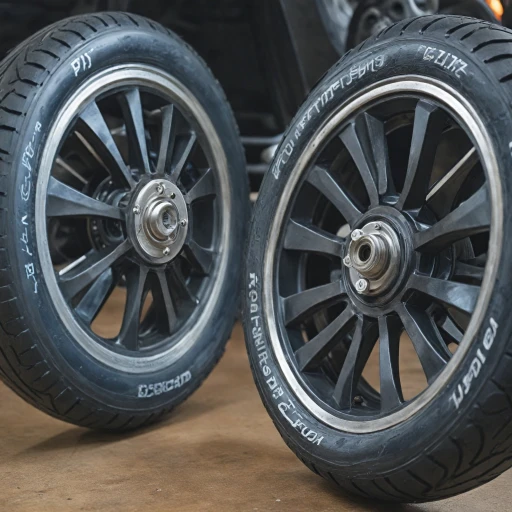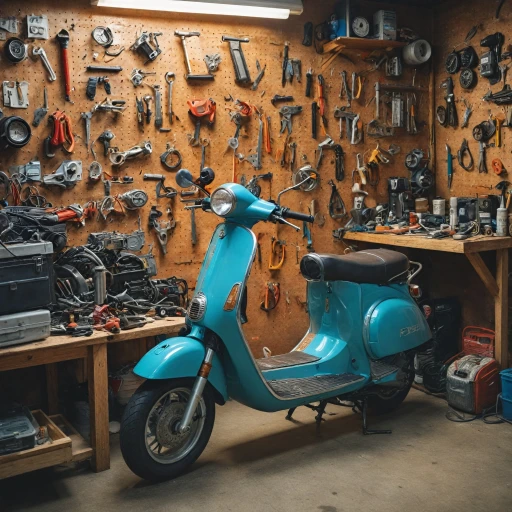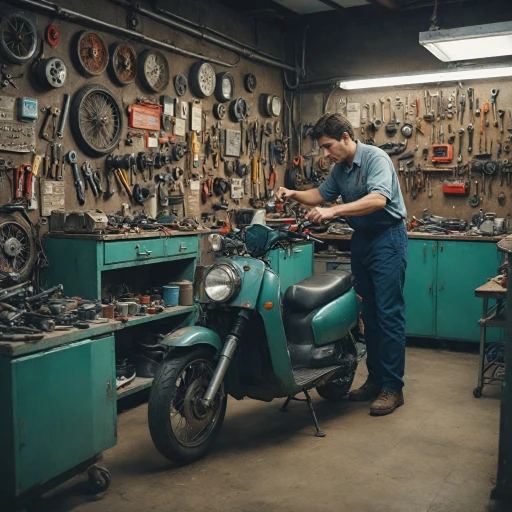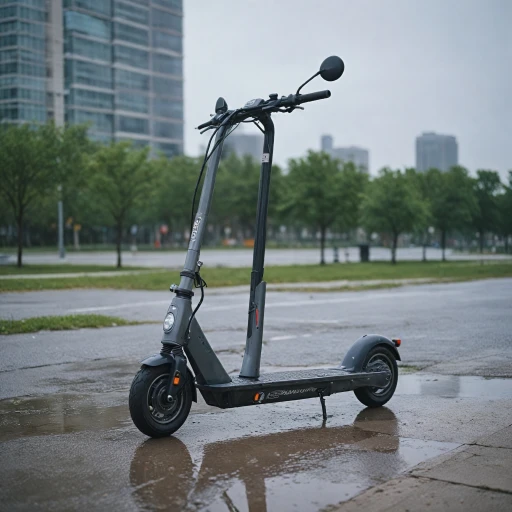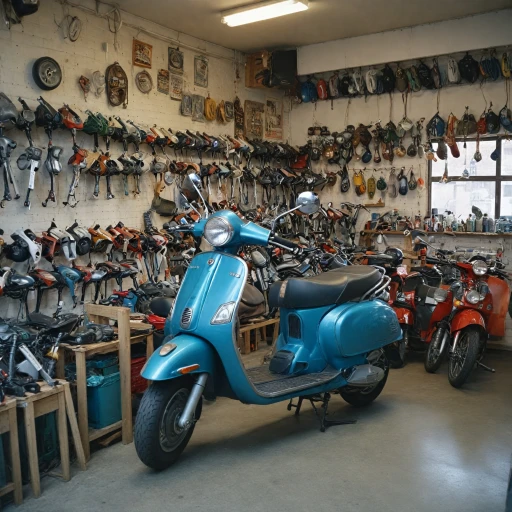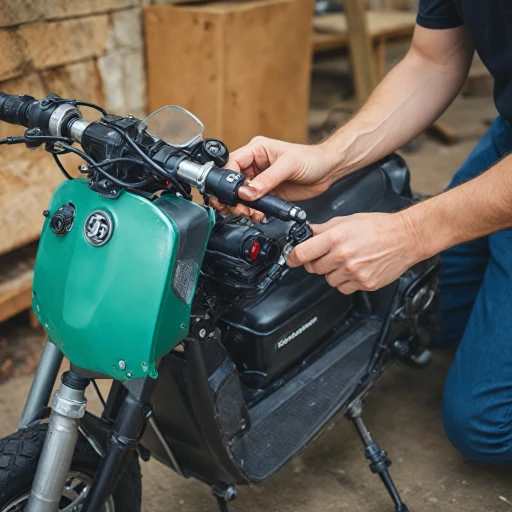
Understanding Common Electric Scooter Problems
Recognizing Typical Electric Scooter Issues
Electric scooters have become a popular mode of mobility, offering a convenient and eco-friendly alternative to traditional vehicles. However, like any mode of transport, they are not immune to problems. Understanding common issues can help you diagnose and address them effectively, saving time and potentially costly repairs.
One of the most frequent issues is a depleted or malfunctioning battery pack. Over time, batteries lose their ability to hold a charge, which can significantly reduce the scooter's range. Regular maintenance and proper charging habits can extend the battery's life, but if you notice a significant drop in performance, it might be time to consider a replacement.
Another common problem is a flat tire. This can happen due to punctures or general wear and tear. Keeping your tires properly inflated and checking them regularly can prevent this issue. If you encounter a flat, having the right tools and knowledge to fix it can be invaluable.
Issues with the motor or electrical components can also arise, especially in older models. These can manifest as unusual noises, reduced power, or complete failure to start. While some minor repairs can be done at home, complex electrical issues might require professional help.
Lastly, general wear and tear on parts like brakes and lights can affect your scooter's performance and safety. Regular inspections and timely replacements are crucial to keep your scooter in top condition.
For a more detailed guide on how to tackle these issues, you might find this resource on navigating electric scooter repairs helpful. It provides insights into troubleshooting and when to seek professional assistance.
Essential Tools for Electric Scooter Repair
Basic Toolkit for Electric Scooter Repairs
If you're considering embarking on electric scooter repairs, having the right tools at hand can make a world of difference. Much like when working on a bicycle repair or tackling a scooter bike issue, having the right equipment ensures safety and efficiency.- Allen Wrenches: These are crucial as scooters often use Allen bolts. Different sizes are usually required, so a full set is a smart investment.
- Screwdrivers: Both Phillips and flathead drivers are essential for accessing the inner components of the scooter.
- Multimeter: This tool is invaluable when checking electrical components like the battery and motor for continuity and voltage.
- Tire Inflator and Pressure Gauge: Ensuring the right tire pressure can significantly extend the range and performance of your scooter.
- Pliers and Wrenches: Essential for handling various repair tasks, from tightening bolts to handling wire connections.
Essential Spare Parts to Have on Hand
Just as a bike repair shop would stock essential spare parts, your home repair kit should include commonly needed components. Being prepared can reduce downtime and keep your scooter running smoothly for miles.- Replacement Tyres: Tires wear out over time, and having a spare set can help avoid the inconvenience of a flat tire.
- Inner Tubes: These are especially useful if you often ride over rough terrains that could puncture the tires.
- Fuses: A blown fuse is a common issue, and having replacements can save you a trip to a repair shop.
- Brake Pads: Effective braking is crucial for safe riding, so ensuring you have spare brake pads is important.
- Battery Packs: If your current battery starts to fail or doesn't hold charge well, having a backup can ensure you maintain a good range.
Step-by-Step Troubleshooting Guide
Step-by-Step Approach to Diagnosing Issues
Addressing electric scooter problems can be a daunting task, especially for those new to the world of scooters. However, a systematic approach to troubleshooting can simplify scooter repair. Here’s how to embark on your repair journey:
Battery Performance Check
One of the most frequent issues with electric scooters is battery-related. Begin by examining the battery pack's connections and ensuring they are secure. If your scooter is not reaching the expected range, it might be time to consider a replacement. Battery performance degrades over time, significantly affecting the miles it can travel on a single charge.
Inspect the Motor and Wheels
Should the battery be in good condition, yet the mobility is compromised, the motor might be the culprit. Listen for unusual sounds or vibrations, which can often indicate internal issues. Additionally, check the wheels for any flat tire or obstruction that might affect the scooter's functionality. A quick inspection of the tires can save you from more extensive repairs later on.
Evaluate the Electrical System
If the scooter will not power on, or if some lights and signals are malfunctioning, it could be an electrical issue. Check all cables and connectors for wear and tear. Ensuring that all electric components are intact is crucial for the scooter's operation.
Brake System Check
Brakes are vital for safety and maintaining control of your electric bike or scooter. Make sure the brake pads are not worn out and that the brake cables function smoothly. Squeaking or sticking brakes often require an adjustment or replacement.
Tools and Resources
Equipping yourself with the right tools can ease the repair process. Consider investing in an electric scooter repair kit, which typically includes essential tools and spare parts. Online repair help and forums can also be invaluable resources, offering insights and advice from experienced users.
By following these steps, you can often pinpoint the problem source within your scooter, making the next actions, whether they are more self-repairs or seeking professional services, clearer. Ensuring regular maintenance checks can also help stave off these issues before they become problematic.
For those considering purchasing a new scooter altogether, understanding the advantages of waterproof models might provide additional value and longevity to your riding experience.
When to Seek Professional Help
Recognizing Situations for Expert Assistance
Navigating the realm of electric scooter repair can sometimes be daunting, and there are times when DIY solutions might not suffice. Knowing when to seek professional assistance can be crucial in preventing further damage to your scooter bike.- Persistent Electric Issues: If electric scooters consistently experience power problems—even after a basic battery and wiring inspection—it might indicate an underlying issue that requires professional help. Troubles with the battery pack or motor often warrant expert diagnosis.
- Complex Mechanical Repairs: Issues like a flat tire that can't be fixed through standard bicycle repair methods or persistent brake malfunctions are best addressed by professionals who have access to specialized repair tools and parts.
- Warranty and Parts Availability: Repairing your scooter during the warranty period without professional intervention could void the warranty. Moreover, some parts may only be available through authorized service centers. Professionals are more equipped to handle such repairs while sourcing the top-quality spare parts necessary for your model.
- Safety Concerns: If the scooter shows signs of malfunction that could compromise safety, such as erratic speed control or unstable riding conditions, it is safest to consult a service center immediately.
How a Repair Shop Can Lift the Burden
Taking your electric scooter to a well-versed repair shop can bring peace of mind. The expertise in such establishments ensures precise diagnostics and repairs, thereby extending the life of your scooter while enhancing its mobility and performance. They can provide professional insights into preventive maintenance tips, ensuring fewer issues down the road. Ultimately, while DIY maintenance plays a role in small repairs and basic maintenance, knowing when to hand over the reins to a service professional is vital for the longevity of your electric scooter. Not only does it prevent unnecessary wear but it also guarantees your safety on every ride.Finding Reliable Repair Services
Locating Trustworthy Service Centers
When an electric scooter requires more complex repairs, or if the attempt to fix it yourself does not work, it can be a relief to find a dependable repair shop. Before you commit, consider these steps to ensure your scooter gets the top notch service you expect.
- Research Repair Shops: Start by researching repair services that specialize in electric scooters, electric bike, and scooter bike models. Look for service centers with positive reviews and recommendations from other scooter owners. A quick search online can reveal repair forums and local bike repair shops equipped to handle scooters.
- Check Certified Centers: Identify service providers who have been certified by your scooter's manufacturer. Certified centers usually have in-depth knowledge and access to specific spare parts, guaranteeing more precise repairs.
- Inquire About Parts Availability: Electric scooters come with unique parts that might need specific repairs. Before handing over your scooter, ask about the availability of parts for your specific model. This ensures that the repair center can address issues such as battery replacement or flat tire repairs without unnecessary delays.
- Compare Service Options: While exploring multiple repair services, compare the services offered, pricing structures, and the estimated time for repairs. Some service providers might offer additional perks like pick-up and drop-off services, which can save you time.
- Customer Service & Satisfaction: Customer reviews and testimonials can offer insights into the level of customer service you can expect. Repair shops that prioritize communication and customer satisfaction are more likely to earn your trust. This information can typically be gleaned from their privacy policy and service reviews.
Remember, when dealing with complex issues such as battery packs or motor repairs, professional help can save you from further damage. Knowing where to turn when DIY solutions do not suffice will help you maintain your scooter's longevity and performance, ensuring you can enjoy those miles of mobility for years to come.
Preventive Maintenance Tips
Maintain Your Scooter’s Performance with Routine Care
Keeping your electric scooter in top condition will not only extend its life but also ensure it delivers optimal performance on the roads. Regular maintenance can prevent frequent repairs and keep your scooter’s battery, motor, and other components working efficiently. Here’s how you can go about it:
- Battery Care: The battery is a critical component of your electric scooter. Ensure you charge it according to the manufacturer’s guidelines and avoid letting it deplete completely to prolong its lifespan. Regularly inspect the battery pack for any signs of wear or damage.
- Check for Wear and Tear: Regularly inspect your tires for any flat tire signs and ensure they are adequately inflated. Examine the brake components and any exposed wiring for any wear. Addressing these issues early can save you on costly repairs.
- Cleaning: Dust and debris can impact the scooter's performance. Cleaning the frame, wheels, and parts regularly will help maintain a smooth ride. Be careful with moisture, especially if your electric scooter isn’t completely waterproof.
- Lubrication: Regularly lubricate moving parts like the chain or hinge points to prevent rust and ensure smooth operation.
Developing a Regular Maintenance Schedule
Routine check-ups can detect potential problems before they become serious repair issues. You might consider setting a maintenance schedule mapped out in miles instead of time to coincide with your electric scooters use:
- Every 200 miles: Perform basic checks like tire pressure, lights, and brakes.
- Every 500 miles: Include more comprehensive checks like inspecting the motor, tightened nuts, and bolts.
- Every 1000 miles: Look into professional evaluation from a service center. They can assess aspects you might have missed and offer advice.
Stay Updated with Manufacturer Recommendations
Always refer back to the scooter’s user manual for advice specific to the brand and model. Manufacturers offer valuable insights into care and may include updates or recalls relevant to your device. Your electric scooter is an investment, and regular maintenance will help ensure you get the most out of it, empowering your mobility for years to come. This proactive approach to maintenance complements the information in earlier sections about troubleshooting and knowing when to seek help.

